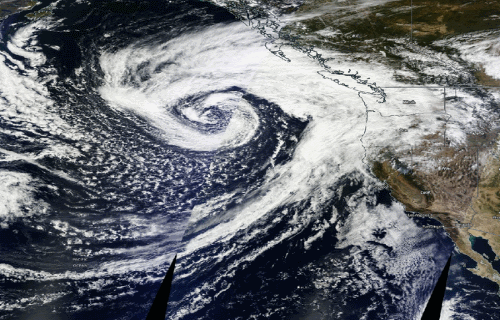Fast-Moving Storms: How To Prepare For High Winds

Table of Contents
Assessing Your Risk and Creating a Storm Plan
Before a fast-moving storm hits, understanding your risk is paramount. This involves assessing your home's vulnerability and developing a comprehensive storm plan. Effective hurricane preparedness, tornado preparedness, and general severe weather preparedness all start with a solid plan. Key aspects include:
- Determine your home's vulnerability to high winds: Are there large, mature trees close to your house? Is your roof in good condition, and are there any loose or damaged shingles? Weak points in your home's structure are more susceptible to wind damage. Consider the age and condition of your windows and doors as well.
- Develop a comprehensive family emergency plan: This plan should detail evacuation routes, designated meeting points both inside and outside your home, and communication strategies in case family members become separated. Include contact information for out-of-state relatives or friends.
- Sign up for weather alerts: Utilize the National Weather Service (NWS) website or app, and register for local emergency alerts through your county or municipality. Stay informed about impending severe weather and be prepared to act quickly. Knowing when a windstorm is coming is crucial.
- Assemble an emergency kit: Your kit should include at least a three-day supply of water (one gallon per person per day), non-perishable food, a first-aid kit, a flashlight with extra batteries, a battery-powered or hand-crank radio, medications, and important documents in a waterproof bag.
- Know your local evacuation zones and routes: If you live in an area prone to flooding or high winds, familiarize yourself with designated evacuation zones and planned escape routes. Practice your evacuation plan regularly, especially with children.
Securing Your Home and Property Before the Storm
Protecting your home and property from high winds requires proactive measures before the storm arrives. Wind damage prevention is key to minimizing losses. Here's how:
- Trim trees and shrubs: Remove any dead or weak branches that could fall and damage your home during high winds. Maintain a safe distance between trees and your house. Professional tree trimming services can help assess and address potential hazards.
- Secure loose objects: Bring loose items such as lawn furniture, garbage cans, grills, and outdoor decorations inside or secure them tightly. Anything that can become airborne is a potential projectile during a windstorm.
- Reinforce your garage door: Garage doors are particularly vulnerable to high winds. Consider reinforcing your garage door or investing in a storm-resistant model. A properly secured garage door can prevent significant wind damage to your property.
- Board up windows or install storm shutters: Protecting your windows is essential to prevent damage and potential injury from flying debris. Boarding up windows or installing storm shutters provides a significant barrier against high winds.
- Bring in anything that could become airborne: This includes children's toys, potted plants, and anything else that could be easily lifted by the wind.
Protecting Your Valuables
Protecting your valuable possessions is crucial during a high-wind storm. Take these steps to safeguard your important items:
- Take photos or videos of your valuable possessions: This documentation will prove essential for insurance claims should your property sustain damage.
- Back up important digital documents and photos to the cloud: Cloud storage provides a safe and accessible backup for irreplaceable digital information.
- Store important papers (insurance policies, IDs) in a waterproof container: Keep vital documents protected from potential water damage during a storm.
- Secure valuable items inside your home in a safe place: Store jewelry, important documents, and other valuables in a secure location away from windows and exterior walls.
Staying Safe During a High-Wind Storm
During a high-wind storm, your priority is safety. Here’s how to stay safe:
- Stay indoors during the storm, away from windows and exterior walls: The safest place during a high-wind event is away from windows, doors, and exterior walls.
- Monitor weather reports regularly for updates: Stay informed about the storm's progression and any changes in the forecast.
- If a power outage occurs, use flashlights instead of candles: Candles pose a serious fire hazard, especially during a storm. Battery-powered flashlights are a much safer alternative.
- Be prepared for potential flooding if heavy rain accompanies the high winds: Heavy rains often accompany high-wind storms, leading to potential flooding. Have a plan for managing potential flood waters.
- Know the signs of a tornado (funnel cloud, roaring sound): If you see or hear signs of a tornado, seek immediate shelter in a basement or interior room on the lowest floor.
Post-Storm Actions and Recovery
After the storm has passed, your focus shifts to assessing damage and beginning the recovery process.
- Check for damage to your home and property after the storm has passed: Assess any damage cautiously and avoid entering damaged areas that may be structurally unsound.
- Report any damage to your insurance company promptly: Contact your insurance provider as soon as possible to initiate the claims process.
- Avoid downed power lines: Report any downed power lines to your utility company immediately. Never approach or touch downed power lines.
- Be cautious of debris and unstable structures: Debris can pose hazards, and damaged structures may be unstable, so exercise caution when surveying damage.
- Contact emergency services if you require assistance: Don't hesitate to call for help if you need assistance with damage assessment or recovery efforts.
Conclusion
Preparing for fast-moving storms with high winds is essential for protecting your property and ensuring your safety. By following these preparation steps, assessing your risks, securing your home, and staying informed, you can significantly reduce the potential for damage and injury. Remember to create a detailed storm plan, including an emergency kit and evacuation strategies, and remain vigilant in monitoring weather forecasts. Don't wait until the last minute – start preparing for high winds today and safeguard yourself and your family against the impact of fast-moving storms. Take action now to mitigate the risks associated with high winds and create a safer environment for you and your loved ones.

Featured Posts
-
 Avauskokoonpano Julkistettu Kamaran Ja Pukin Tilanne Selvisi
May 21, 2025
Avauskokoonpano Julkistettu Kamaran Ja Pukin Tilanne Selvisi
May 21, 2025 -
 Loire Atlantique Un Quiz Pour Evaluer Vos Connaissances
May 21, 2025
Loire Atlantique Un Quiz Pour Evaluer Vos Connaissances
May 21, 2025 -
 Sabalenkas Successful Madrid Open Debut
May 21, 2025
Sabalenkas Successful Madrid Open Debut
May 21, 2025 -
 Peppa Pig Welcomes A New Sibling Release Date Speculation
May 21, 2025
Peppa Pig Welcomes A New Sibling Release Date Speculation
May 21, 2025 -
 Kentro Ygeias Patras Efimeries Iatron 10 And 11 Maioy
May 21, 2025
Kentro Ygeias Patras Efimeries Iatron 10 And 11 Maioy
May 21, 2025
